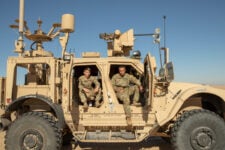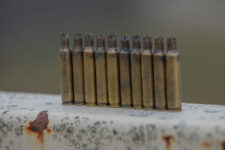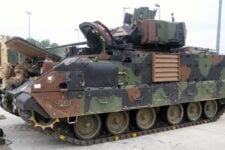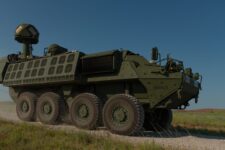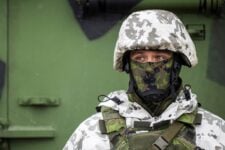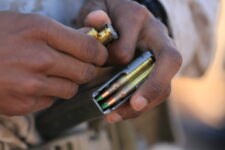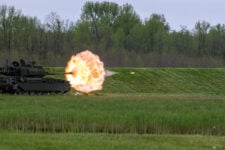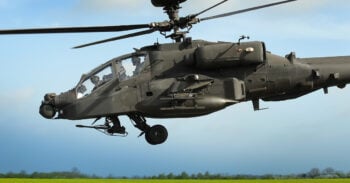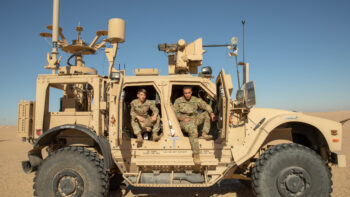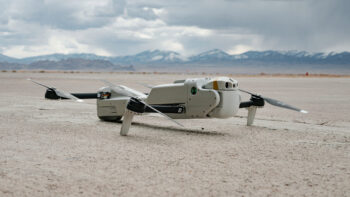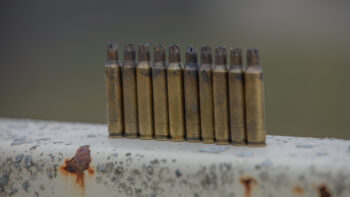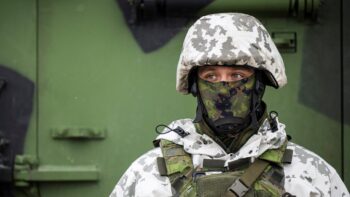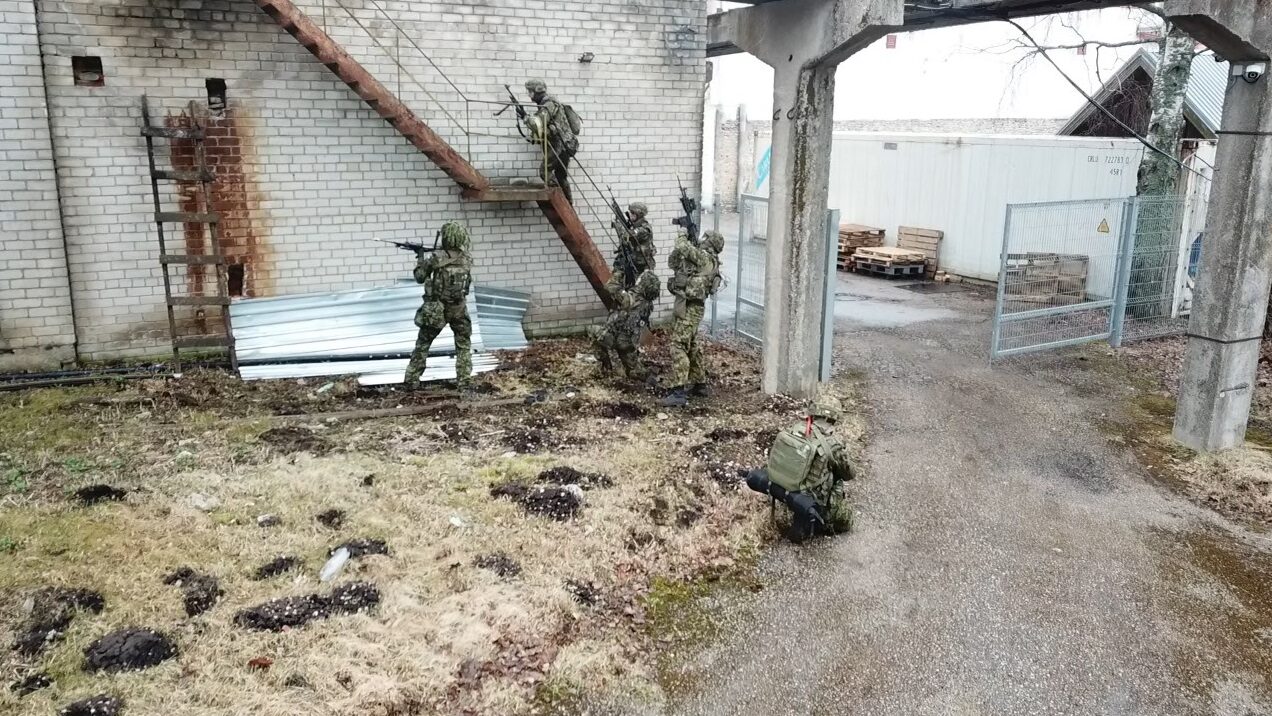
Estonia’s Scouts battalion conducts urban warfare training. (Estonian Defense Forces)
TAPA ARMY BASE, Estonia — Estonia’s rapid-response Scout Battalion would likely be among the first defenders to meet Russian forces if Moscow ever seeks to cross the border. Luckily, the unit is getting first-hand guidance on how best to fight Russians, thanks to a flow of former Scouts who volunteered on their own to fight in Ukraine, and have since returned to provide insights for their active-duty comrades.
“So we are trying to learn … from them how to change our tactics, procedures, all those kinds of things,” Lt. Col. Ranno Raudsik, the Scout battalion’s commander, said today here at Estonia’s largest military base, which sits about 90 miles west of the Russian border.
Raudsik said the “biggest part that’s going to change” is how the unit fights with and against drones. The volunteer fighters also reinforced the emphasis on “small but still important things” like “really good” medical care for the wounded (soldiers should carry four tourniquets, one per limb). Electronic warfare has also been a point of discussion, namely “how to conduct concealment by this way that no one is finding us on the battlefields. That’s a challenge, definitely.”
As a result, the Scouts are constantly refreshing their training and focus areas to better reflect what a real-world battlefield looks like in 2024. Training currently consists of “conventional warfare,” but has a renewed focus on “infantry tactics” after “looking at Ukraine,” Raudsik said.
RELATED: In new NATO trick, Finland stores equipment in Norway, spurred by Russia’s range
Based on the US Army’s Philippine Scouts, the Estonian Scouts have a long history of fighting, dating back more than 100 years, and more recently have deployed to a handful of nations, from Mali to Afghanistan. (Founded by an Estonian-American, the unit’s motto is E Pluribus Unum, the founding motto of the United States.)
When asked if he was concerned about the possibility of fighting Russians either in Ukraine or in Estonia, Raudsik, who wore a Ukrainian flag patch below his Estonian one on his arm and whose Scouts would be among the first to respond to an invasion, said simply, “We’re always ready. That’s our task.”
Part of that readiness includes the ability to call up reserve forces from throughout Estonia, which has a conscription service. Raudsik said the nation will occasionally conduct a snap exercise in which reserve troops have literal hours to drop what they’re doing and appear for days- or weeks-long training. A vast majority, Raudsik said, show up on time and most of the rest have good excuses.
It should come as no surprise that Estonia, a former vassal of the USSR that shares a border with Russia, is heavily invested in finding ways to both help Ukraine and to prepare for a potential invasion of its own territory. Gen. Martin Herem, Estonia’s top military officer, told Breaking Defense this week that the Estonian military had previously discussed sending Estonian troops to rear-guard positions in western Ukraine, in order to free up Ukrainian troops to go to the front. Foreign Affairs Committee Chairman Marko Mihkelson, also speaking this week, said European nations “have to start thinking about a coalition of the willing” to more directly help Kyiv, potentially with direct combat.
Some Scouts are getting real-world experience right now, but thousands of miles away.
EXPLAINER: Eight ‘capability coalitions’ are rushing arms to Ukraine. Here’s who will donate what.
A Scouts detachment is currently in northern Iraq, in Erbil, where it conducts personnel and base security missions, Raudsik said. (Raudsik, like the other Estonian officials, spoke to an audience from the Kaplan Public Service Foundation; Breaking Defense accepted accommodation from KPSF in Estonia.)
Western facilities in the Middle East came under increased attack since Hamas’s Oct. 7 attack against Israel and Israel’s aggressive military response, though the incidents dropped off after three American soldiers were killed in Jordan in February. More broadly, the US military has been looking into different ways to defend its facilities in the face of the rise of loitering and one-way attack drones.
Raudsik said the current threat is mostly from those one-way attack drones, launched by groups in Iraq who are ultimately funded by Iran. But for now, he downplayed the security situation at the base in Erbil.
“The threat level is medium, maybe even low,” he said.
The base’s air defenses, he said, worked “really, really well.”
Army leader dismisses House proposal for drone branch creation
“Operating and defending against the drone threat is something that will be experienced by, you know, all formations at multiple echelons,” said Army Undersecretary Gabe Camarillo.
